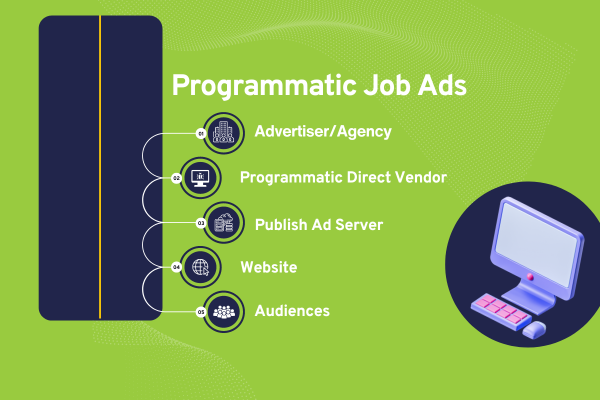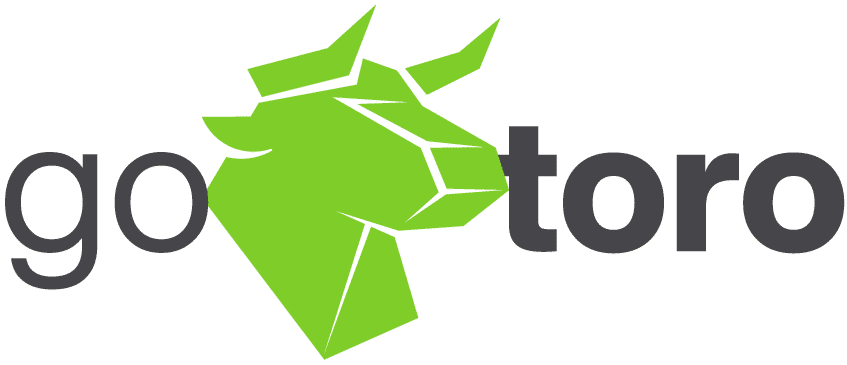Embracing Talent Acquisition Technology in a Rapidly Evolving Landscape

The recruitment landscape is undergoing rapid transformations, driven largely by advancements in technology. In today’s highly competitive job market, the use of sophisticated talent acquisition technology is not just an advantage; it’s a necessity. As organizations vie to attract and retain top talent, the integration of innovative technologies into recruitment strategies becomes crucial. These tools not only streamline the hiring process but also enhance the accuracy and efficiency of recruitment efforts, ensuring that organizations stay ahead in the talent acquisition game.
Among the transformative technologies making significant impacts are Artificial Intelligence (AI), Data Analytics, Employee Referral Platforms, and Programmatic Job Advertising. Each of these technologies brings unique capabilities to the table—from improving the quality of hire through precise targeting and screening to reducing the time and cost associated with acquiring the right candidate. By leveraging these tools, recruiters can transcend traditional limitations, enabling a more dynamic, responsive, and effective recruitment process.
The Digital Transformation in Recruitment: Reshaping Roles and Processes
The Impact of Digital Transformation on Traditional Recruitment
The digital transformation in recruitment represents a profound shift in how talent acquisition is approached and executed. Traditional recruitment processes, often characterized by manual sorting of applications and face-to-face interactions, are being overhauled in favor of automated systems and virtual interactions. This shift is not merely about adopting new tools but about changing the very ethos of recruitment. The integration of talent acquisition technology such as AI and programmatic advertising allows for a more strategic approach to hiring, where decisions are data-driven and results are measurable.
Digital tools enable a more efficient parsing of large datasets, allowing recruiters to quickly identify the most promising candidates from larger pools of applicants. This efficiency not only speeds up the hiring process but also significantly enhances its quality by reducing human errors and biases that typically occur in manual screenings.
Reshaping the Recruiter’s Role with Technology
As technology continues to advance, the role of the recruiter is evolving from administrative gatekeeper to strategic partner in the talent acquisition process. Today’s recruiters are expected to be adept at using digital tools to enhance their effectiveness. They must be capable analysts, able to interpret complex data and analytics to forecast hiring needs and devise talent acquisition strategies that align with organizational goals.
Moreover, the expectations of candidates have also changed; they now seek engagements that are personalized, responsive, and engaging. Recruiters must use talent acquisition technology to not only identify and attract candidates but also to build relationships and maintain communication through automated yet personalized touchpoints. Technologies like AI chatbots, automated email campaigns, and sophisticated CRM systems are becoming standard tools for modern recruiters looking to meet these new demands.
The transformation brought about by these technologies is not just changing how recruiters work; it’s improving how organizations connect with potential employees. By harnessing the power of talent acquisition technology, companies are not only enhancing their recruitment processes but are also positioning themselves as forward-thinking, attractive employers in a competitive marketplace. This strategic advantage is crucial in attracting the kind of innovative, talented individuals who will drive the future success of these organizations.
The Untapped Potential of AI in Recruitment: Harnessing Talent Acquisition Technology
Exploring the Low Adoption Rate of AI in Recruitment
Despite the significant advantages that Artificial Intelligence (AI) offers, its adoption within the realm of recruitment remains surprisingly low. Currently, only about 30% of recruiters have embraced AI in their hiring practices (Smart Recruiters, 2024). This hesitancy can be attributed to several factors. First, there is often a substantial initial cost associated with implementing AI-driven systems, which can deter especially smaller organizations or those with limited budgets. Additionally, there exists a certain degree of resistance to change—recruiters and HR departments may be reluctant to rely on algorithms, fearing they might overlook valuable human elements of the recruitment process. Lastly, the complexity of AI technologies and the need for specialized skills to manage them effectively can pose significant barriers to adoption.
Benefits of AI in Talent Acquisition
The integration of AI in recruitment, a core component of talent acquisition technology, offers transformative benefits. AI enhances the candidate screening process by enabling the analysis of vast amounts of data at speeds and accuracies unachievable by human capabilities. This includes parsing through resumes, assessing candidate responses, and even predicting candidate success in various roles based on historical data. Furthermore, predictive analytics powered by AI can help forecast hiring needs, identify potential hiring trends, and optimize recruitment strategies to meet business goals efficiently.
AI also extends its capabilities to improving candidate experience—a crucial factor in attracting top talent. AI-driven chatbots can provide immediate responses to candidate inquiries, schedule interviews, and maintain engagement throughout the recruitment process, ensuring a seamless and personalized candidate journey.
Leveraging Data Analytics for Strategic Recruitment
The Role of Data Analytics in Modern Talent Acquisition
Data analytics has become a cornerstone of modern talent acquisition technology, providing recruiters with the tools needed to make informed, strategic decisions. By systematically analyzing recruitment data, organizations can optimize every stage of the hiring process. Data analytics enables companies to assess the effectiveness of recruitment channels, understand candidate behaviors, and even predict the future success of hires within the organization.
Key Metrics in Recruitment Analytics
Three critical metrics that recruiters focus on with the aid of data analytics include time-to-fill, cost-per-hire, and candidate quality. Each metric offers specific insights:
- Time-to-Fill: This metric measures the average time it takes to fill a position from the moment it is advertised to the acceptance of the offer. Reducing time-to-fill is crucial for minimizing disruption and maintaining productivity.
- Cost-per-Hire: Understanding the total cost involved in hiring a new employee—including advertising fees, recruiter fees, and other administrative costs—helps organizations budget effectively and assess the efficiency of their recruitment strategies.
- Candidate Quality: By analyzing post-hire data such as performance ratings, tenure, and promotion rates, recruiters can assess the quality of their hires. This metric is vital for determining the long-term impact of the recruitment process on organizational success.
Organizations that harness these metrics can significantly enhance their recruitment efficiency and effectiveness, positioning themselves as employers of choice in competitive talent markets. By integrating advanced data analytics into their recruitment processes, companies are not only able to streamline their operations but also improve the quality of their hires, ultimately leading to greater organizational success.
Empowering Recruitment with Employee Referral Platforms: A Key Piece of Talent Acquisition Technology

Understanding the Mechanics and Benefits of Employee Referral Platforms
Employee referral platforms have become a vital component of modern talent acquisition technology, primarily because they harness the power of personal networks and internal company advocacy. These platforms are designed to streamline the referral process by providing a structured system where employees can easily refer candidates for open positions. The system typically includes tracking capabilities to monitor referrals’ progress and manage rewards.
The benefits of such platforms are multifold. First, they tend to yield higher quality candidates because employees understand the company culture and requirements well enough to recommend suitable candidates. Additionally, hires made through referrals often have shorter ramp-up times and higher retention rates, contributing positively to company morale and reducing turnover costs.
Leveraging Social Networks and Gamification
Employee referral platforms effectively utilize social networks by allowing employees to share job openings within their personal and professional networks via social media. This not only expands the reach of the job advertisement but also adds a layer of trust and credibility when a job post is shared by someone known.
Gamification is another critical feature of these platforms, which enhances engagement and participation. Many platforms incorporate elements such as leaderboards, point systems, and rewards to motivate employees to make referrals. This approach not only makes the process fun and competitive but also recognizes and rewards employees for contributing to the company’s growth through successful hires.
The Impact on Employee Engagement and Network Utilization
The use of referral platforms significantly boosts employee engagement. Employees feel valued and integral to the recruitment process, fostering a sense of ownership and pride in helping shape the company’s future. Furthermore, by tapping into employees’ networks, companies can access passive candidates who might not actively be looking for new opportunities but are open to them if presented by someone they trust.
Maximizing Reach with Programmatic Job Advertising: Advanced Talent Acquisition Technology

Introduction to Programmatic Job Advertising in Recruitment
Programmatic job advertising represents a cutting-edge application of talent acquisition technology, utilizing algorithms and machine learning to place job ads across various online platforms. Unlike traditional advertising, which relies on a one-size-fits-all approach, programmatic advertising targets specific demographics based on data such as browsing behavior, location, and job search activities.
Targeting the Most Suitable Demographics
The core strength of programmatic job advertising lies in its ability to analyze vast amounts of data to identify and target the most suitable candidate demographics. This targeted approach ensures that job ads are seen by candidates who are most likely to be qualified for the position, thereby increasing the efficiency of the recruitment process. For example, if a company is looking for a software developer, the ad platform can target individuals who have visited coding forums, engaged with similar job listings, or hold relevant qualifications based on their online profiles.
Integrating New Technologies: Challenges and Considerations in Talent Acquisition Technology
Identifying Potential Challenges in Adopting New Technologies
While the benefits of incorporating advanced talent acquisition technology are clear, the path to integration can be fraught with challenges. Common obstacles include the high cost of new technology, the complexity of implementation, resistance to change from the recruitment team, and the need for ongoing training and support. Additionally, concerns about data privacy and security can hinder the adoption of technology that relies heavily on data analytics and cloud-based systems.
Strategies to Overcome Adoption Challenges
To successfully navigate these challenges, organizations can adopt several strategic approaches:
To successfully integrate new technologies into recruitment processes, a phased implementation approach can be effective. By gradually introducing new tools, teams have time to acclimate and any issues can be addressed as they arise. Complementing this, investing in comprehensive training programs builds confidence and competence, while ongoing support alleviates fears and encourages adoption. Cost management is also critical; exploring different funding models, such as subscriptions or pay-per-use plans, can reduce upfront costs, and demonstrating return on investment through pilot projects can further justify the investment. Additionally, robust change management strategies, which include clear communication of benefits and regular feedback loops with users, ensure that the technology aligns with their needs. Lastly, implementing stringent data security measures and ensuring compliance with data protection regulations are essential to build trust and safeguard sensitive information.
The Transformative Impact of Talent Acquisition Technology on Recruitment
The introduction of talent acquisition technology such as AI, data analytics, employee referral platforms, and programmatic advertising has revolutionized the recruitment landscape. These technologies not only streamline the hiring process but also enhance the quality of hires, reduce costs, and improve the overall efficiency of recruitment strategies. By enabling a more targeted approach to candidate selection and fostering deeper engagement with potential hires, these tools offer a significant competitive edge.
Future Trajectory of Recruitment Technologies
Looking ahead, the evolution of recruitment technologies is likely to accelerate, with AI and machine learning leading the charge. These advancements will continue to refine the precision of candidate selection processes and expand the capabilities of recruitment professionals. As technology becomes more integrated into everyday recruitment activities, it will foster more dynamic, responsive, and personalized recruitment experiences.
Embrace the future of recruitment by integrating cutting-edge talent acquisition technology into your strategy. Stay ahead of the competition by enhancing your recruitment processes with tools that offer precision, efficiency, and scalability – request a demo today.


